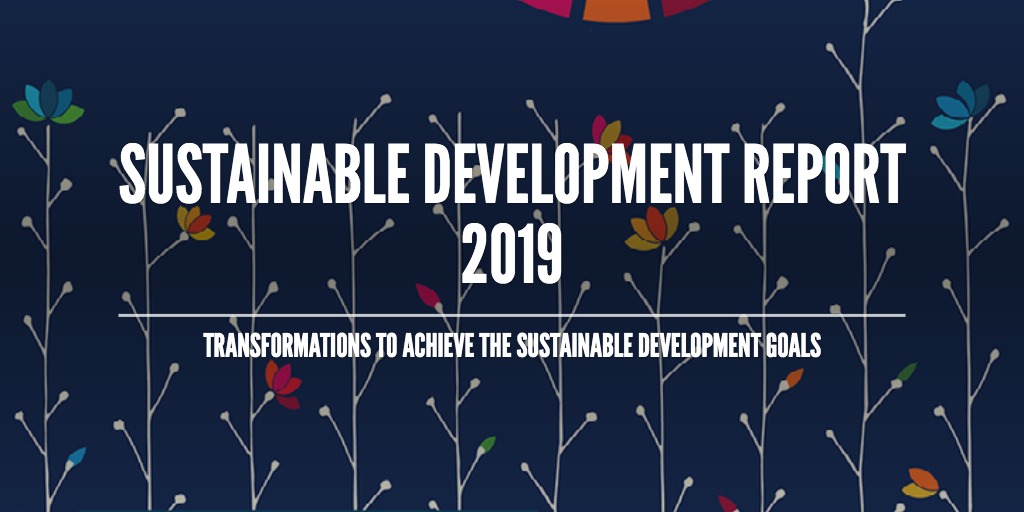September 2019 marks the first time that Heads of State and Governments will convene in-person at United Nations Headquarters in New York to review their progress on the Sustainable Development Goals. And while some countries are slowly moving forward with SDG-focused policies, no country is undertaking the major transformative changes that are necessary to successfully achieve the goals by 2030.
On June 28, 2019, the Sustainable Development Solutions Network (SDSN) and Bertelsmann Stiftung published the Sustainable Development Report 2019, including the SDG Index and Dashboards, which details 162 countries’ progress on each of the 17 SDGs. While not an official monitoring tool, the Sustainable Development Report complements the efforts by National Statistical Offices and international organizations to collect and standardize indicators to monitor the SDGs.
“The Sustainable Development Report 2019 calls for six major transformations in every country to address skills and jobs, health, clean energy, biodiversity and land use, cities, and digital technology. All countries have a big job ahead to create SDG roadmaps and strategies for success.”
Jeffrey D. Sachs, Director, SDSN
Achieving the SDGs requires major long-term transformations
Students of Jeffrey Sachs’s SDG Academy course How to Achieve the SDGs will recognize the organization of SDGs in to the Six Transformation Pathways: Education, Inclusion, Jobs and Growth; Health and Wellbeing; Clean Energy and Industry; Sustainable Food and Land Use; Smart Cities and Transport; and Digital Technologies and Governance. The Pathways organization underscores the importance of thinking of the SDGs not as 17 individual goals, but as interdependent priorities that require coordinated action, funding, and governance to achieve the overarching vision of Agenda 2030.
This concept of “transformative change” is gaining momentum in the research, business, and policy communities due to alarming trends in climate change and biodiversity protection that may soon become irreversible. Rising income and wealth inequalities and unequal access to key services, such as health and education, within countries also call for deep transformations of social, territorial, and fiscal policies. Designing the right mix of transformative policies and balancing short-term and long-term considerations requires the integrated efforts of scientists, engineers, and policy specialists. Broad public support and buy-in are also needed. The Sustainable Development Report 2019 helps stakeholders better understand where countries are on the path to achieving the SDGs, and supports their efforts to coordinate and deploy resources to the issues that need them most.
Key findings of the Sustainable Development Report 2019
Globally, countries performed worst on SDG 13 (Climate Action), SDG 14 (Life Below Water), and SDG 15 (Life on Land). No country in the world has obtained a “green rating” (the report’s indicator for the achievement of an SDG) on SDG 14 (Life Below Water). The authors conclude that sustainable land use and healthy diets require integrated agriculture, climate, and health policy interventions. New indicators on nations’ trophic level and yield gap closure highlight where energy and agricultural efficiency can be strengthened to support sustainable food supply while addressing negative environmental, biodiversity, and health impacts of diets.
Take our course Feeding a Hungry Planet to learn more about sustainable food and agriculture.
The economic activities of high-income countries generate significant environmental and socioeconomic spillover, such as deforestation from palm oil and other fuel commodity demands, tax havens and banking secrecy that undermine a country’s ability to raise public revenues, and tolerance for poor labor standards in international supply chains that harm vulnerable populations.
Conflicts in many parts of the world continue to lead to reversals in SDG progress. The number of people in bonded labor or in prison remains high, particularly in low-income countries. Corruption and threats to a free press are worsening in more than 50 countries covered in the report, including several middle income and high-income countries. Eradicating extreme poverty remains a global challenge, with half of the world’s nations not on track for achieving SDG 1 (No Poverty). In middle- and high-income countries, rising income inequalities and persisting gaps in access to services and opportunities by income or territorial area remain important policy issues.
Discover the disadvantages of our global economic system in Sustainable Development: The Post-Capitalist Order.
The 2019 SDG Index and Dashboards
The SDG Index and Dashboards summarizes countries’ current performance and trends on the 17 SDGs. Denmark tops this year’s list with a score of 85.2/100, followed by Sweden and Finland. The Democratic Republic of Congo, Chad, and the Central African Republic rank last among the 162 countries assessed.
It should be noted that the indicators, data, and methodology have been revised for the 2019 Index, making the rankings and scores not comparable with previous editions. Therefore, a change in a country’s ranking does not necessarily signify a change in its SDG performance. Overall, a country’s SDG Index score and ranking are sensitive to methodological choices, including method of aggregation and weighting. Readers are encouraged to read beyond the summary SDG Index and look at comparative performances at the Goal and Indicator levels.
What can you to help your country achieve the Sustainable Development Goals? Enroll in an SDG Academy course today!
